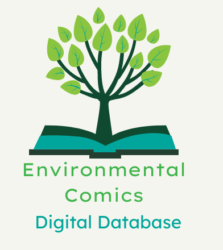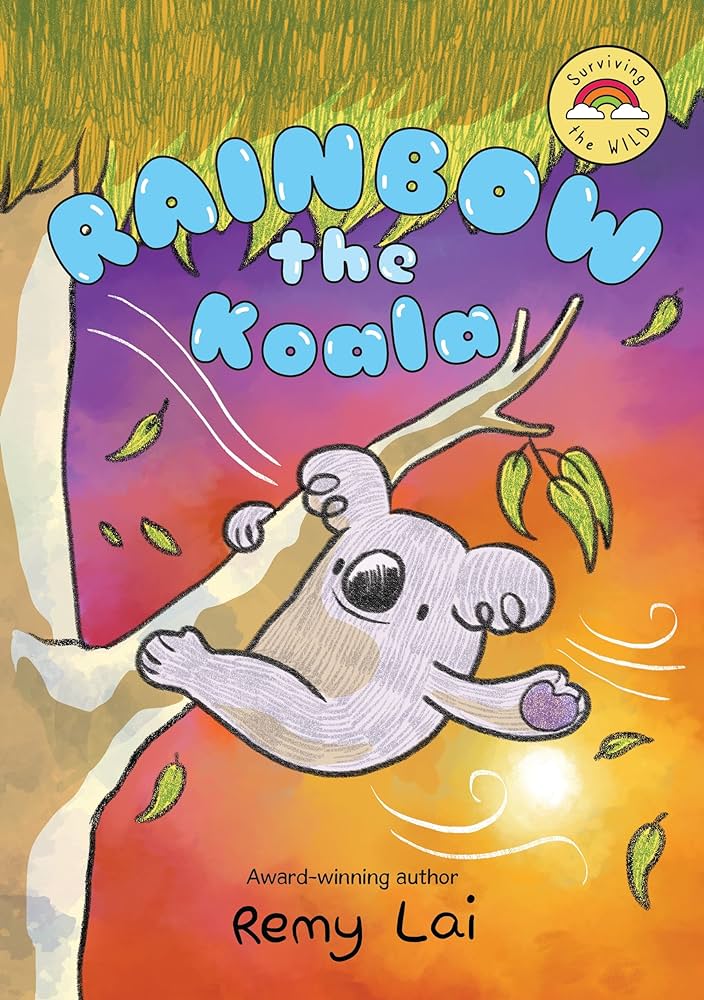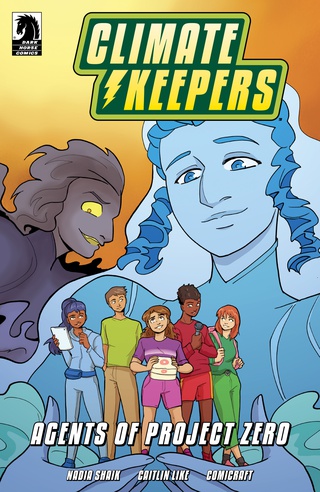“In that moment, when she took Ginseng into her arms and pledged to care for her all life long, I knew I no longer had anything to fear about losing the knowledge of Tea Dragons to time” — Hesekiel, The Tea Dragon Tapestry, p. 125.
| Creator(s) | K. O’Neill |
| Publisher | Oni Press |
| Publication Date | 2021 |
| Genre | Fantasy |
| Environmental Themes and Issues | Endangered Species, Hybridity, Anthropomorphism |
| Protagonist’s Identity | Greta: Brown skinned and non-binary protagonist The comic also includes a multi-racial cast of characters, hybrid animal/human characters, a queer couple, and a disabled character who uses a wheelchair |
| Protagonist’s Level of Environmental Agency | Level 3: Moderate, Plot-Driven Environmental Agency |
| Target Audience | Middle Grade (8 to 12 years) |
| Settings | Rural fantasy setting |
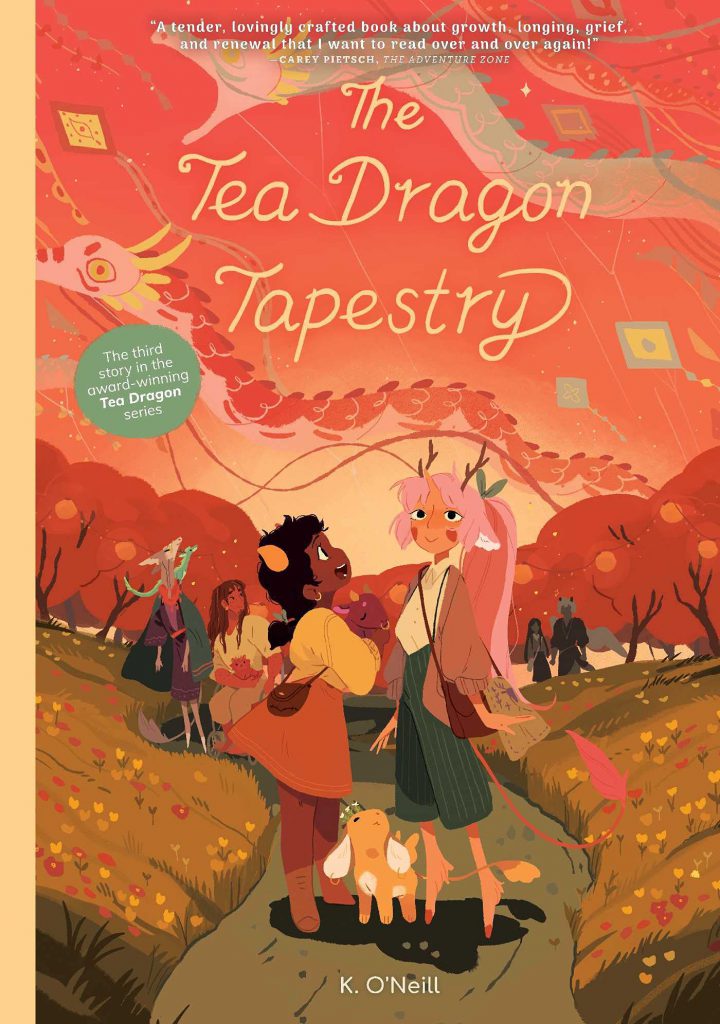
Environmental Themes
The Tea Dragon Tapestry concludes K. O’Neill’s three-volume Tea Dragon Society series. This installment takes place one year after the events of the first graphic novel. Protagonist Greta has taken on the care of the Tea Dragon Ginseng after her former owner’s death, but the creature continues to mourn her loss and has still not produced any new tea leaves. As Greta and her friend Minette try to find new ways to cheer Ginseng up, the famed blacksmith Kleitos–an anthropomorphized cow–arrives in the rural village to seek a new apprentice. He challenges Greta to forge a single item of her choice, which he will use to evaluate if she is skilled enough to become an apprentice in his forge. Greta begins to prepare for the test. Rinn and the dragon Aedhan, characters from The Tea Dragon Festival, also arrive in the village to visit with Rinn’s Uncle Erik and his partner Hesekiel, two other members of the Tea Dragon Society.
Meanwhile, Minette, Greta’s antlered friend (and potential love interest), receives a tapestry from the monastery where she formerly trained as a prophetess until her memory was permanently damaged. The unfinished tapestry, which Minette began to create at the monastery, depicts a mysterious stag that she refers to as her Ancestor. Strange dreams of the stag soon haunt Minette, reflecting her anxieties about her identity and the loss of her ambitions of becoming a prophetess. Greta attempts to help both Ginseng and Minette cope with their grief, but both Erik and Greta’s father remind the girls that they cannot rush the grieving process. Greta’s father remarks, “I know it’s hard, because you are a kind girl and want to help everyone. But sad people aren’t objects to fix. Give them space and show them you’ll still love them whenever they are ready to be loved” (O’Neill 91). This emphasis on compassionate care and loving others on their own terms pervades the nature-focused series.
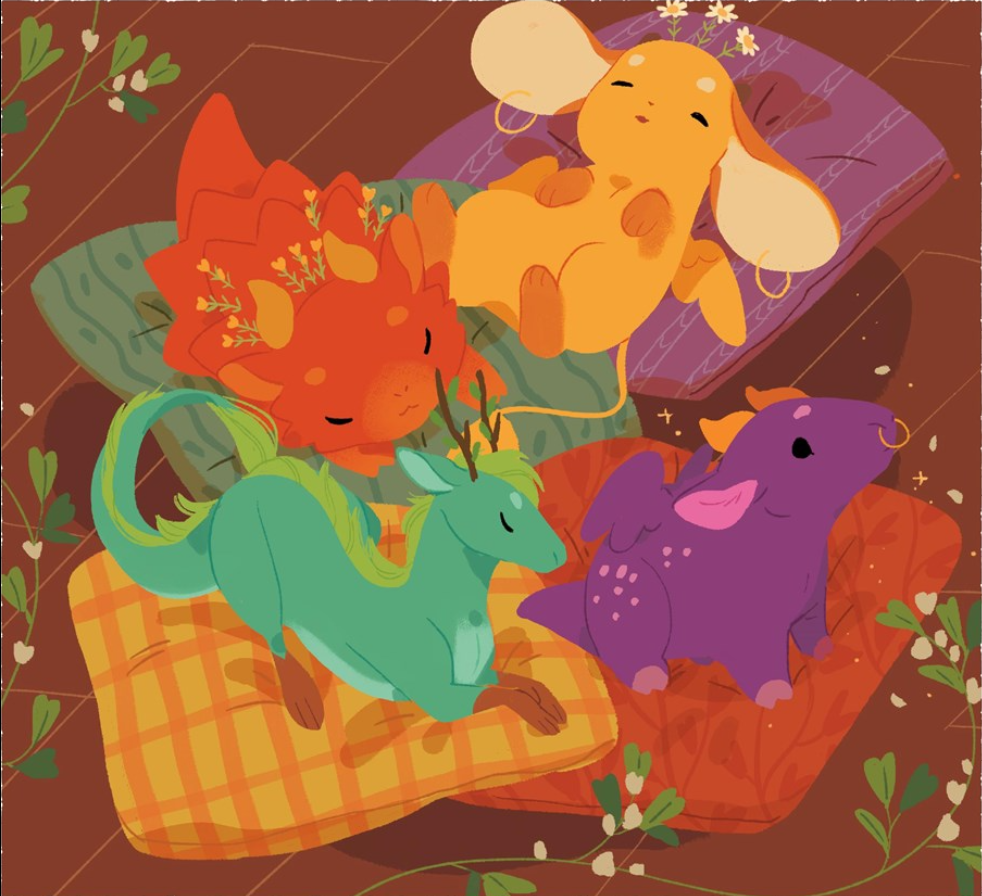
At the conclusion of the comic, Greta forges the object for her test: a engraved metal bowl for Ginseng. Kleitos accepts her as his apprentice, declaring, “I’ve been practicing this craft for almost a century, and yet here in this bowl is something I had never thought to master–how to make an object to communicate with someone, to speak through metal” (O’Neill 113). Minette also achieves happiness after she has a healing encounter with the Ancestor in a dream and finishes her tapestry. The primary narrative concludes with an illustration depicting fresh tea leaves growing from Ginseng’s horns as a result of Greta’s careful tending. Finally, the epilogue depicts Hesekiel writing a letter about the future of Tea Dragon husbandry. Though he once feared that the art of caring for the creatures would die out, he writes that Greta’s decision to care for Ginseng has assuage these worries: “In that moment, when she took Ginseng into her arms and pledged to care for her all life long, I knew I no longer had anything to fear about losing the knowledge of Tea Dragons to time” (O’Neill 125). This ending suggests that Greta and other young people will continue to conserve the rare Tea Dragons.
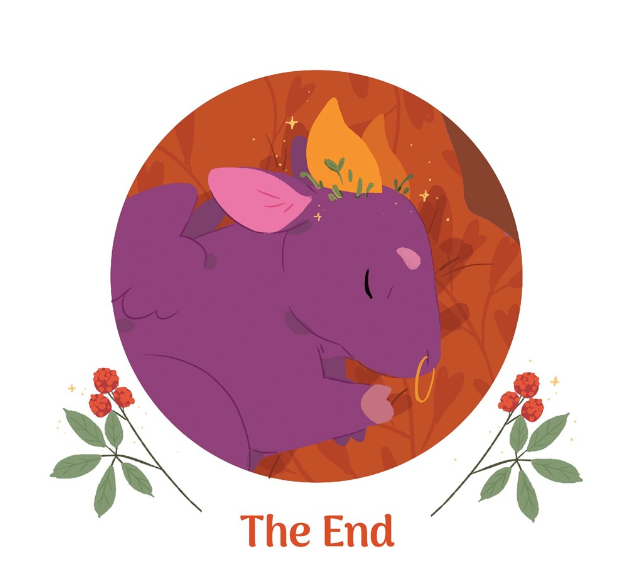
Like The Tea Dragon Society and The Tea Dragon Festival, this comic promotes community, living in harmony with nature, and tending animals and plants. O’Neill consistently portrays the environment as a source of healing, magic, and restoration. The comic also includes a diverse cast of characters, including characters with different skin colors; the non-binary character Rinn; anthropomorphic characters, such as Kleitos and the Sylke Hesekiel; and the queer couple Hesekiel and Erik.
Paratexts
The comic’s paratext includes excerpts from the fictional “Illustrated History of Tea Dragons.” These sections describe the origins of Tea Dragons, which descended from small wild dragons that a Sylke biologist domesticated. The paratext identifies the wild versions of the Tea Dragons as an endangered species, noting, “The original species of herb-growing dragon that the Sylke accidently befriended is now very rare in the wild, and babies are protected so that they cannot be taken from their home. It was quickly decided that it would be better to breed from existing Tea Dragons rather than trying to hatch new ones. Not only would this protect the wild populations, but it allowed the Dragons to be carefully bred and grow into their new cultures, climates, and homes” (O’Neill 131). These small wild dragons do not appear in the primary narratives of the three comics.
The paratext also includes sections on Tea Dragon biology and “Living with Tea Dragons,” as well as an excerpt about different varieties of Tea Dragons that notes that several varieties of Tea Dragons have gone extinct due to low populations or lack of breeding. Finally, the paratext concludes with a description of the Tea Dragon Society, which highlights the growing disinterest in caring for Tea Dragons.
